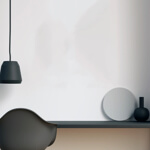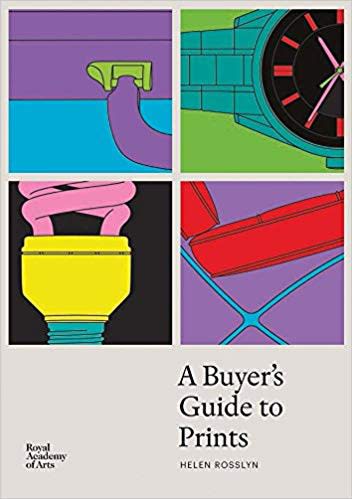Over £10,000
Explore prints from our Exhibitors
Leonora Carrington
Silla Daghda, 2011
Lithograph
60x80 cm
Edition of 100
signed
TIN MAN ART
Stand E9
Stand E9
€ 11,600.00
Pre-Christian Irish mythology emphasizes relationship to the mother. The third Divine dynasty to inhabit Ireland, after the Portolon and the Nemed were the Thuata Di Danann, whose name meant 'the...
Pre-Christian Irish mythology emphasizes relationship to the mother. The third Divine dynasty to inhabit Ireland, after the Portolon and the Nemed were the Thuata Di Danann, whose name meant "the children of the Goddess Danu," the universal mother goddess. The Thuata were skilled in poetry, lore, and magic; and many of their chiefs were gods.
Dagda, their father-god chief, was endowed with great wisdom and called the Good God, but not so much for his character as for his multiple skills and talents; associated with abundance and fertility, he specialized in Druid magic.
Manannan was a sea-god known as the Son of the Sea. It is said he was the first inhabitant of the Island of Man (hence its name) and its king. Manannan protected Ireland from invaders by using his masterful trickery and illusion: causing mists to rise and conceal the island, making one man seem like a hundred, and chips of wood in the water to appear like ships of war. But the most curious legend for which he is remembered tells of his three legs joined together and spread out like the spokes of a wheel, which helped his traveling at a great pace. After thousands of years, the three-legged wheel or triskele remains the symbol of the Isle of Man.
The ancient Irish venerated divine forces in all aspects of nature, particularly the sun god, which was seen as life-giver and promoter of fertility. Solar images abound in various artistic expressions, from rock art, to solar wheels used as talismans, engraved in coins or on shields protecting the user against the dark forces. Even roses and rosettes were associated to the solar god because of their sun-like shape.
Irish legend tells that the Stone of Destiny, which forms part of the coronation chair on which British monarchs are crowned, was brought from Ireland to England. It came from Tara, the Thuatan capital, which stood at the epicenter of Ireland, where it served as throne for crowning Irish High Kings. Its power resided in that it formed part of the treasure from the Thuata Di Dannan.
Leonora Carrington's The Chair: Dagda Thuata Di Danann brings together in the image of a throne decorated with references to the creative power of the sun, the fertility of Daghda, the magic skills of Manannan, Thuatan myths, and the glory of the children of the goddess Danu. Opening an invisible circle, the sun, like a flower with its head surrounded by petal-like rays, rests on top of its high-back, leading our eye to various solar references adorning the chair, including a bird rising from the sun, and a spiked wheel on the seat. Mana, short for Manannan, is inscribed on the bottom left, above Daghda Thuata de Dannan, and further down, to the right, an imprint of the triskele. Swirling mist emerging from under the chair travels upwardly, over two body-less hands that play with the yet unrevealed future in the form of an egg, toward the center of a table, on which the apparition of a white rose in an egg, faces the sun and closes the circle.
Dagda, their father-god chief, was endowed with great wisdom and called the Good God, but not so much for his character as for his multiple skills and talents; associated with abundance and fertility, he specialized in Druid magic.
Manannan was a sea-god known as the Son of the Sea. It is said he was the first inhabitant of the Island of Man (hence its name) and its king. Manannan protected Ireland from invaders by using his masterful trickery and illusion: causing mists to rise and conceal the island, making one man seem like a hundred, and chips of wood in the water to appear like ships of war. But the most curious legend for which he is remembered tells of his three legs joined together and spread out like the spokes of a wheel, which helped his traveling at a great pace. After thousands of years, the three-legged wheel or triskele remains the symbol of the Isle of Man.
The ancient Irish venerated divine forces in all aspects of nature, particularly the sun god, which was seen as life-giver and promoter of fertility. Solar images abound in various artistic expressions, from rock art, to solar wheels used as talismans, engraved in coins or on shields protecting the user against the dark forces. Even roses and rosettes were associated to the solar god because of their sun-like shape.
Irish legend tells that the Stone of Destiny, which forms part of the coronation chair on which British monarchs are crowned, was brought from Ireland to England. It came from Tara, the Thuatan capital, which stood at the epicenter of Ireland, where it served as throne for crowning Irish High Kings. Its power resided in that it formed part of the treasure from the Thuata Di Dannan.
Leonora Carrington's The Chair: Dagda Thuata Di Danann brings together in the image of a throne decorated with references to the creative power of the sun, the fertility of Daghda, the magic skills of Manannan, Thuatan myths, and the glory of the children of the goddess Danu. Opening an invisible circle, the sun, like a flower with its head surrounded by petal-like rays, rests on top of its high-back, leading our eye to various solar references adorning the chair, including a bird rising from the sun, and a spiked wheel on the seat. Mana, short for Manannan, is inscribed on the bottom left, above Daghda Thuata de Dannan, and further down, to the right, an imprint of the triskele. Swirling mist emerging from under the chair travels upwardly, over two body-less hands that play with the yet unrevealed future in the form of an egg, toward the center of a table, on which the apparition of a white rose in an egg, faces the sun and closes the circle.
Join Our Mailing List
* denotes required fields
We will process the personal data you have supplied in accordance with our privacy policy (available on request). You can unsubscribe or change your preferences at any time by clicking the link in our emails.





 A Buyer's Guide to Prints
A Buyer's Guide to Prints